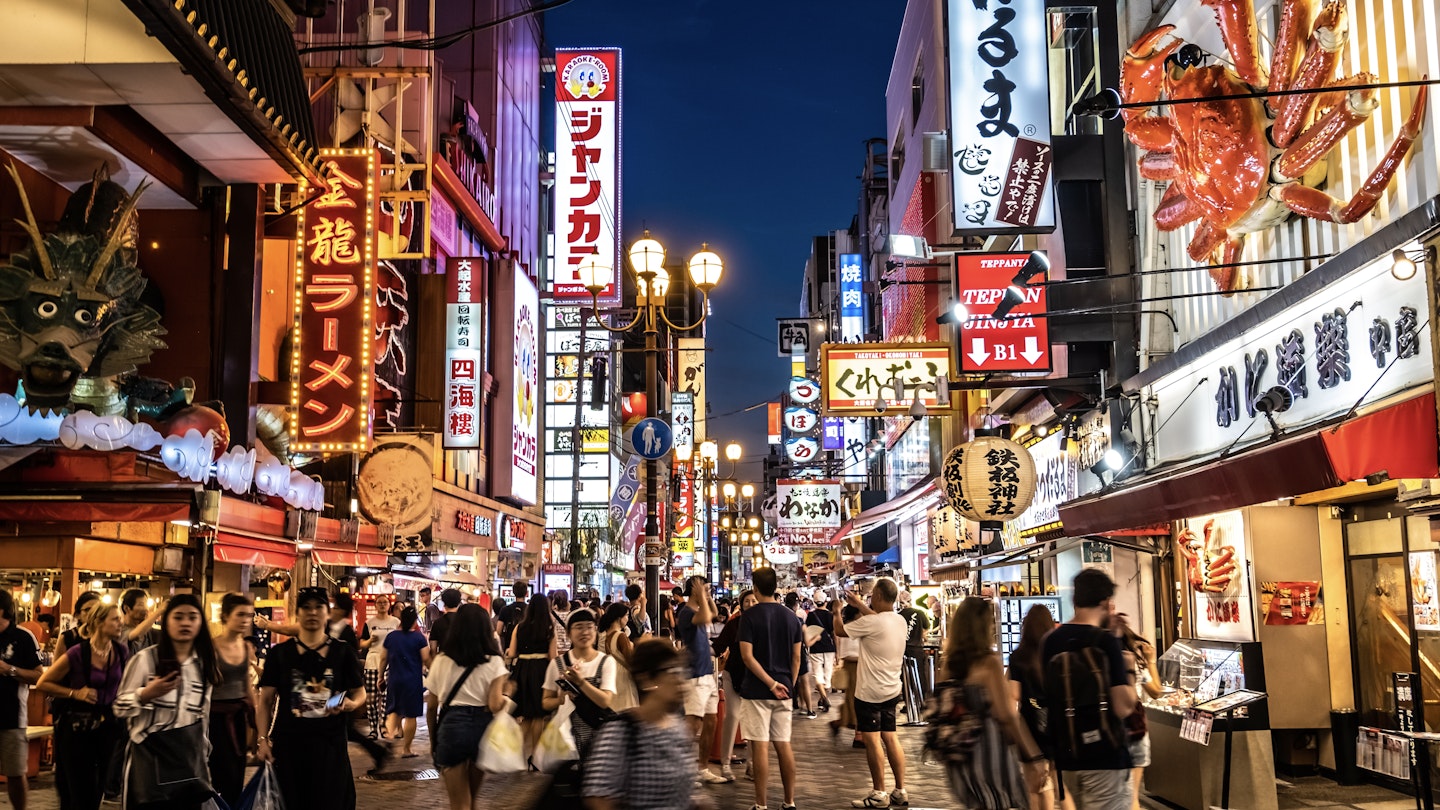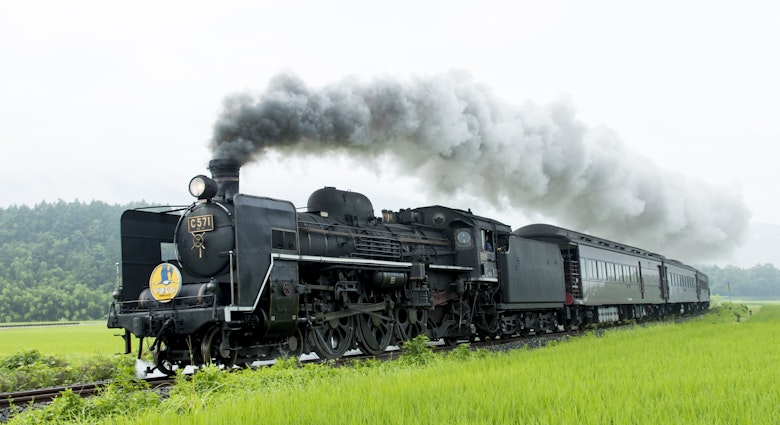Senior Director of Content Laura Motta recently spent 10 days in Japan. To make the most of her time in the country, she included a four-day mini-excursion to Osaka and Kyoto – a trip within a trip, if you will, which anyone can replicate.
Everyone goes to Tokyo, and I would never tell you to skip it. But another critical part of any Japan itinerary is that magical Shinkansen (bullet train) ride south to Osaka, and the astounding sites that await beyond. A mind-boggling pair of cities – Osaka and Kyoto – are crammed with more shrines and temples, steel-and-glass skyscraper malls, scenic vistas and world-class restaurants than you can experience in a month, never mind in just a few days. This was my third trip to Japan and my second time visiting Osaka and Kyoto.
Before I get to my recommendations, here are a few practical tips:
- When to arrive: Arriving in Osaka around midday lets you drop your bags at the hotel, rest and then hit Dōtonbori in the evening, when its famous neon lights are ablaze.
- Getting there from the airport: The spotless, inexpensive airport limousine bus from Kansai Airport makes eight stops in Osaka, which include all of its main train stations.
- Getting around: Japan is world-famous for the ease and comprehensiveness of its public transit for a reason. You can – and certainly should – do this route without a car. High-speed (more expensive/faster) and local (less expensive/slower) trains cover every inch of this region and will shuttle you quickly between Kyoto and Osaka. Both cities have easy-to-use subway systems.
- What to pack: Certainly, your walking shoes and room in your stomach for a lot of ramen. Keep in mind that Japan has four distinct seasons and temperatures vary significantly between them. Check the weather ahead of time – and pack accordingly.
- How to structure your days: It’s tempting to cram your schedule when there are so many things to see. Yet realistically, you won’t be able to do more than two major sites – maybe three, if you’re really going for it – in a single day. This is especially true in Kyoto, where the best sites are far apart and can require up to an hour of travel to reach.
- Take it easy: Don’t forget to eat, hydrate, rest and wander. And tell yourself you’ll be back.
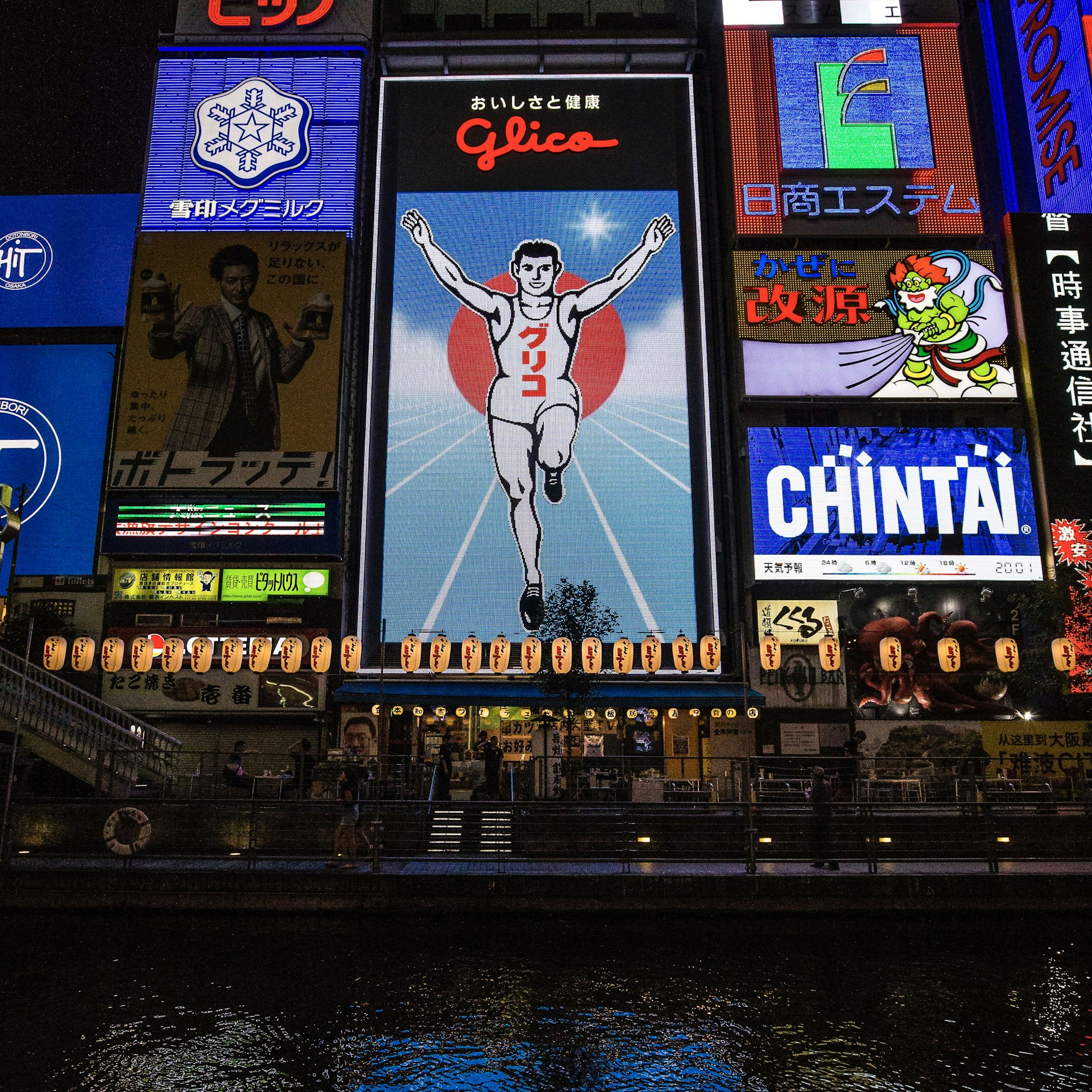
Day 1: Osaka
Snack time
You’ve been traveling all morning. It’s time to eat. (Unless, of course, you stuffed yourself en route on the amazing bento boxes you can get at Tokyo Station.) Keep it simple like I did and grab onigiri (rice balls) or a sando at 7-Eleven. There’s one on every corner, you’ll only spend a few dollars, and buying local snacks – especially in Japan – is among travel’s greatest joys.
See the neon
If you’re in Osaka, go see the Glico man. It's a rule. Or maybe it's just mine. This famous animated sign of a runner, arms raised, about to cross the finish line in some hypothetical marathon in the sky, remains delightful despite the tourist crush on the streets below. This ad for the Glico candy company (candy bars give you energy – get it?) has become an informal mascot of Dotonbori, Osaka’s dining and nightlife district. After dark, it’s fun to wander here through the area’s many arcades, claw-machine and pachinko parlors, and shops. If you start here on a weeknight, it’s delightfully quiet.
Insider tip: Arrive before sunset and duck into a tiny side street to Hōzen-ji, a small temple known for its moss-covered statues. I was there when they were lighting the lanterns for the evening – a dreamy experience indeed.
Have a cheap and cheerful dinner
Dotonbori is teeming with restaurants. You can’t miss the distinctive signage advertising takoyaki (grilled octopus balls), gyoza and crab. My favorite takoyaki stand, Takoyaki Yoriyabunzaemon, is humble compared to its bombastic neighbors; there is no 5ft marquee. Inside, you’ll sit on a well-worn barstool while the single cook pours takoyaki batter into the famous round molds and serves it to you still piping hot, and slathered in mayo, barbecue sauce and bonito flakes. A warning: if you value the skin on the roof of your mouth, do not eat too fast here.
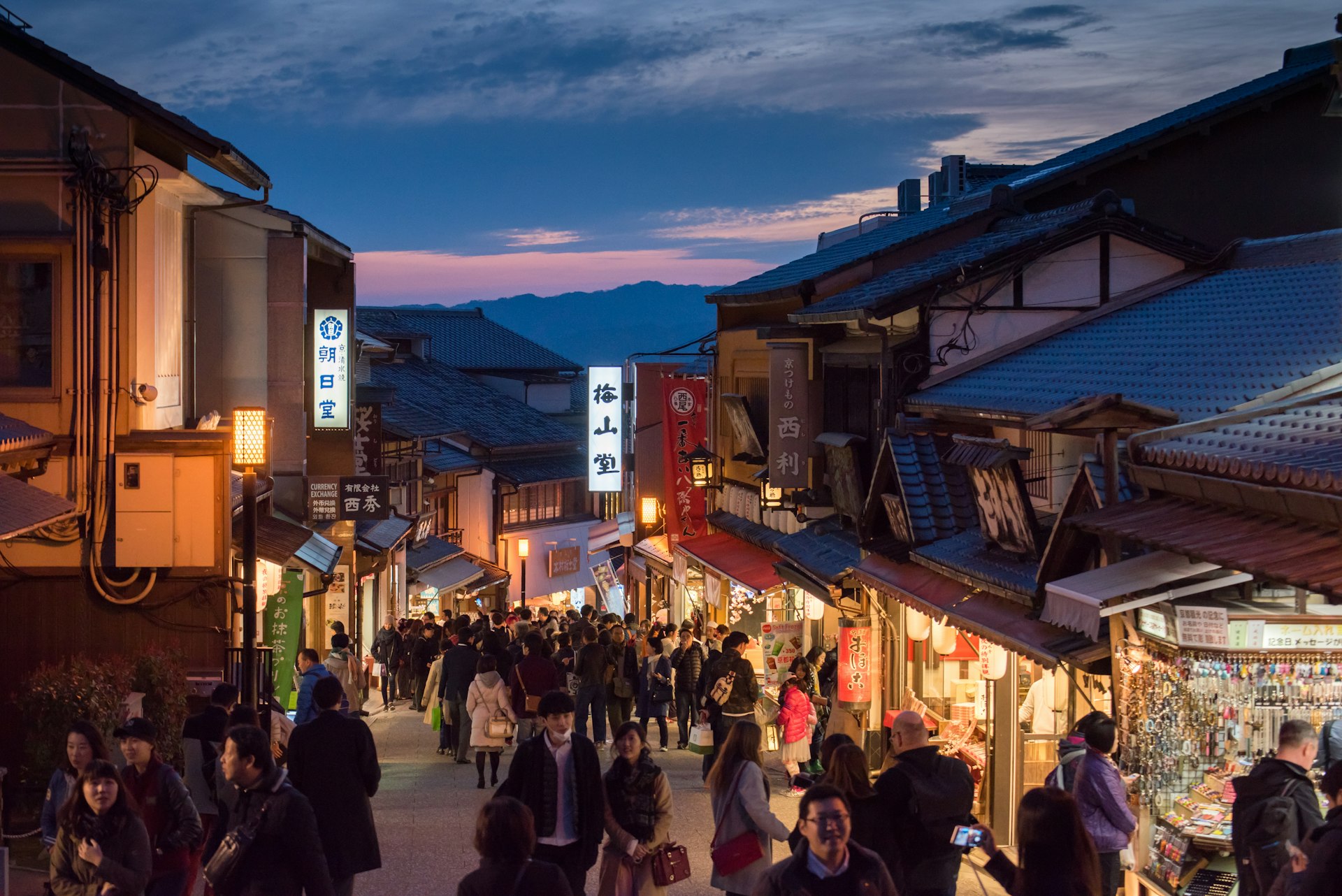
Day 2: Kyoto
Bullet train
The Shinkansen train between Osaka and Kyoto is cheap and lightning fast. This trip is included in many Japanese rail passes, but if you’re paying for a standalone ticket, you’ll pay 1420 yen (about US$10). The trip takes 15 minutes, so slower local trains hardly seem worth the mildly cheaper price. Arrive midday and head to your hotel to check in and drop your luggage. Before you depart, don’t forget to look around Kyoto Station for the eki ink stamp, which you can imprint into a notebook as a souvenir. Every train station in Japan has a uniquely designed stamp, even if you sometimes have to ask the attendant at smaller stations where to find it.
Stay in style
If there’s one place to splurge on a fabulous hotel in Japan, it’s in Kyoto. Whether you’re strolling under vibrant fall leaves or spring cherry blossoms, or wandering the narrow alleys and stepped streets of the Gion district, Kyoto is romantic, its temples and shrines otherworldly. My choice was Hotel the Mitsui Kyoto, a new luxury property that blends smart contemporary design with traditional Japanese accents. Beside its excellent restaurant – more on that below – the highlight is the hotel's updated approach to the traditional onsen, called Thermal Spring. This vast, moodily lit indoor space offers heated pools and loungers amid beautiful rock formations and water features. And unlike many onsen experiences, this one is a bathing-suits-required, mixed-gender space where everyone can hang out. There is also no surcharge for entry.

Visit the temples
My boyfriend cheekily refers to Fushimi Inari Taisha, Kyoto’s famous shrine with its rows and rows of vermillion gates ascending a dramatic hillside, as “the Instagram shrine.” It’s hard to say that he’s wrong: the site is a favorite among foreign travelers for good reason. The gates are simply gorgeous and – yes – photogenic. Just don’t expect to find yourself there alone.
Insider tip: Afterward, stop at the charming Vermillion Cafe for a sweet snack and coffee. Sit on the back porch, which overlooks a lovely stretch of forest, for especially serene vibes (spectacular in autumn).
If you still have energy left in the afternoon, head to Nishi Hongan-ji, a mammoth Buddhist temple complex that’s home to some of the largest wooden structures in Japan. After you marvel at the huge lanterns and expansive halls, stop by the brightly painted Chinese Gate, which dates back to the late 1500s. This temple is also within walking distance of Kyoto Station, and can be a good place to start or end your trip.
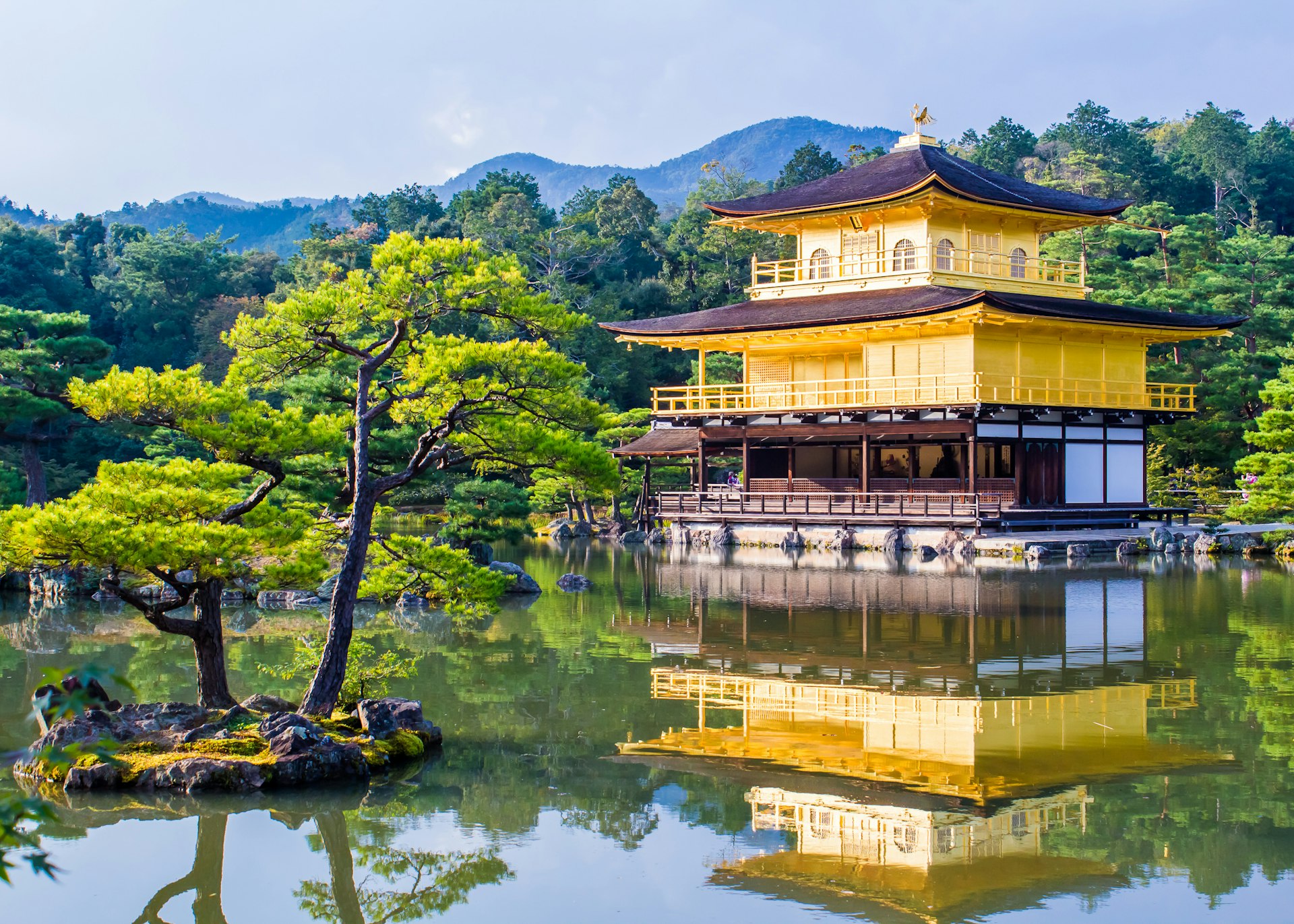
Day 3: Kyoto
Go for the gold
Kinkaku-Ji, sometimes called the Golden Pavilion, is among Kyoto’s (and Japan’s) most famous and photographed landmarks. This UNESCO World Heritage site, where a brilliant gold temple appears to float along the shores of a serene lake, is well worth braving the crowds for, especially in sunny weather when the reflection of the lake glints off of the temple’s exterior walls. Go early, packing your patience – and you’ll understand instantly why so many people flock here.

Quick bite
School Bus Coffee Stop is a charming spot for an easy, affordable breakfast or lunch in cozy, industrial-farmhouse-style surroundings. Comforting selections like bagel sandwiches and avocado toast are accompanied by the shop’s excellent, house-roasted coffee.
Modern love
For an aesthetic palate cleanser after a quick lunch, stop by the Kyoto City KYOCERA Museum of Art, which houses rotating exhibits, often of contemporary and modern art, in a fantastic brick structure that dates to the 1930s.
Taste sensation
And you’d be remiss if you stayed at the Hotel the Mitsui Kyoto without eating at its elegantly flamboyant Italian restaurant, Forni. Yes, there are pizzas and pastas on its à la carte menu. But I’d highly recommend the tasting dinner, where impeccably composed dishes like sea bream citrus tartare and grilled wagyu arrive on geometric plates and stands. It’s a feast for the eyes as well as the stomach.
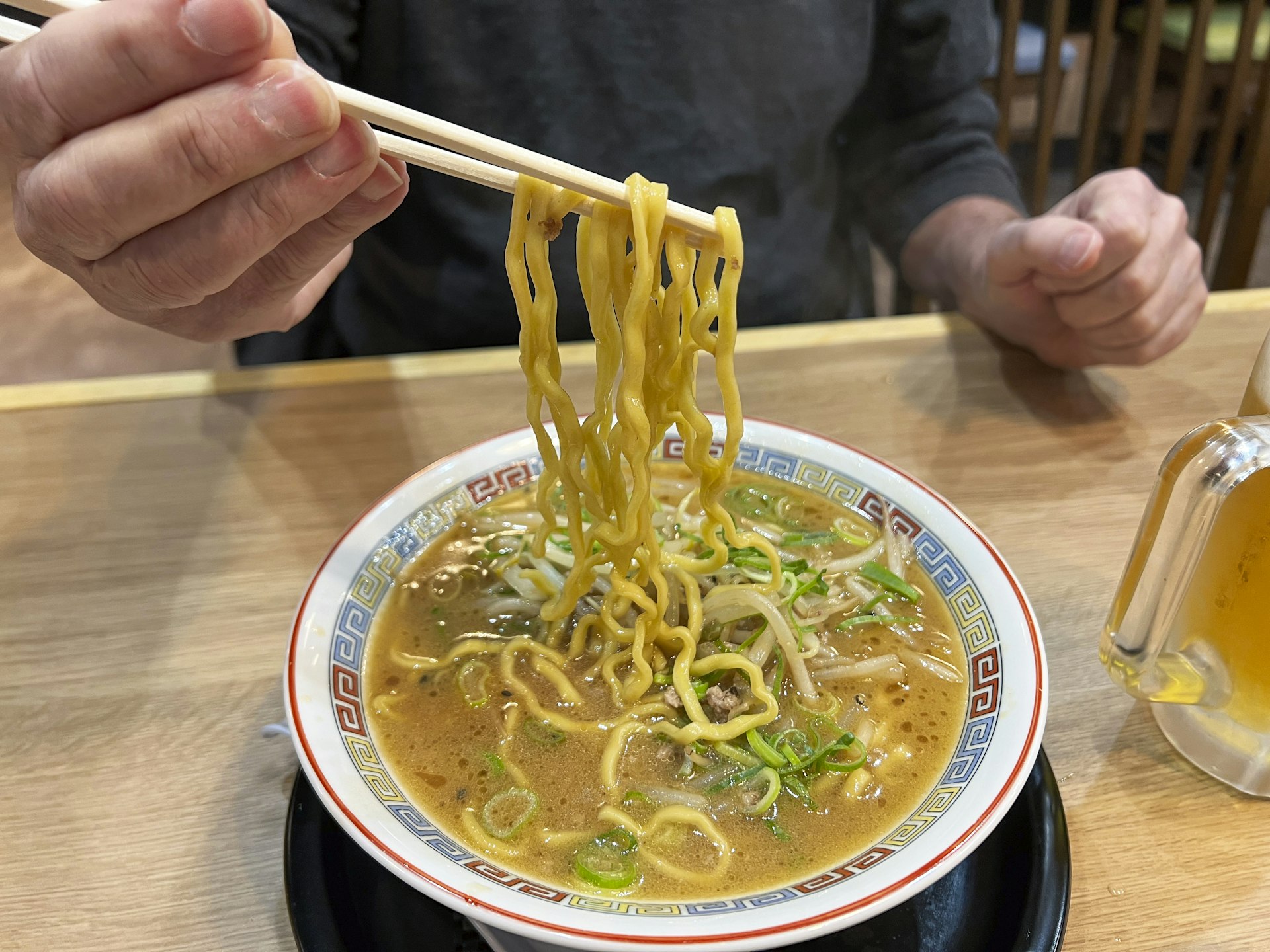
Day 4: Osaka
Smart hotel
After going luxe in Kyoto on meals and lodging, I came back to Osaka looking to save money without sacrificing too much comfort. I wasn’t ready to sleep in a sarcophagus-sized pod or get every meal at 7-Eleven. (Well, not every meal – just a few.) After getting off the train from Kyoto at the massive Shin-Osaka Station, I took the easy-to-use metro to one of the best places I’ve stayed in Japan, the chicly designed, austere-but-comfortable Hotel Noum, just across the river from Temmabashi Station. The location made transportation connections easy and kept me sheltered from the stark urban rush of Umeda, Osaka’s high-rise business district. Rooms are small, comfortable and spotless; mine had a river view. The hotel also has an airy coffee shop in its lobby that attracts as many locals as travelers. I popped in here for a breakfast pastry and a latte and was ready to start the day.
Window(less) shopping
Even if you don’t stay in Umeda, visiting the neighborhood is a must. Spend a day wandering its cavernous, endless indoor shopping malls and underground food courts. You may never see daylight, but you will find everything from Hermès bags to the best 300-yen (US$2) gyoza you’ve ever tasted. I like to check in on the enormous red whale, which hangs suspended from the atrium of the Hep Five department store, which also happens to have a ferris wheel on its roof.
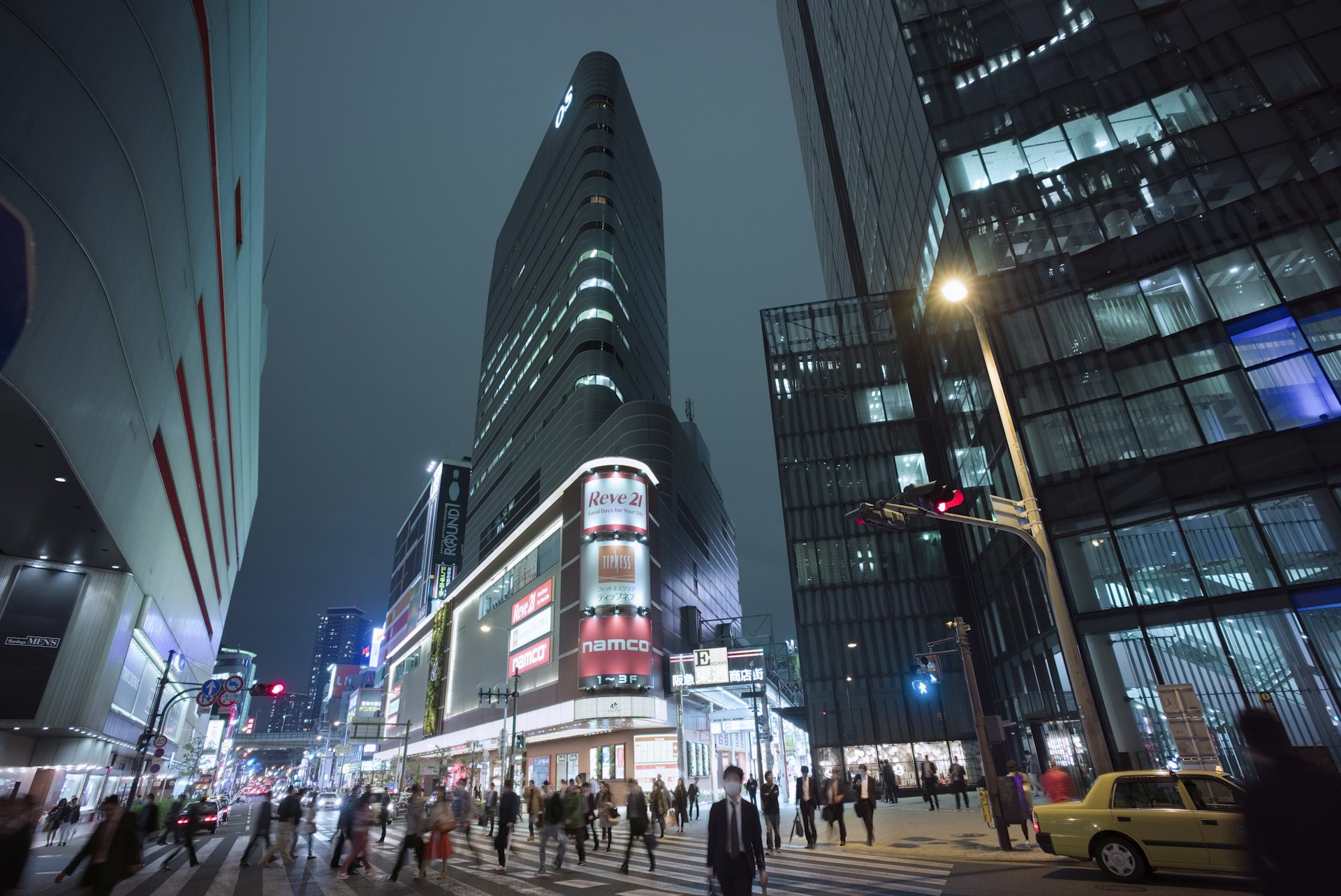
Enjoy a messy lunch
Train stations are where you’ll find some of the best food in Japan – and Osaka’s sprawling Umeda Station is no exception. My favorite train-station ramen is at Menya Takei, located behind the entry gates for the Hankyu Railway. Menya Takei specializes in tsukemen, in which the ramen noodles and broth are served separately. Dip the noodles into the broth to eat – yes, you’ll undoubtedly get it all over your clothes, but that’s part of the fun. Lots of laundry to do when you return home is a sure sign of a great trip.
Insider tip: Ask the gate agent to let you through. They’ll make you pay for a rail ticket on the way in, and then may refund you on the way out.
From Osaka, hop back onboard the Shinkansen for more exploring in Japan, or do what I did and catch a quick, affordable domestic flight to Tokyo’s Haneda airport to connect to your flight home.
Keep planning your trip to Japan:
The 24 best things to do in Japan
Find out if you need a visa to enter the country
Take to the open road on these top drives
How to discover Japan on a budget

